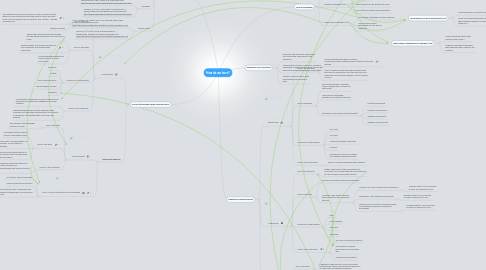
1. Current technology based learning theory
1.1. Connectivism
1.1.1. WHO? theorists
1.1.1.1. The networks we become involved in, allow us to stay current within our own profession and within society."What we know today, isn't as important as our ability to stay current" - George Siemens 2007
1.1.1.2. Stephen Downes
1.1.2. WHAT? big ideas
1.1.2.1. Theory that revolves around technology and the digital age that we are immersed in today
1.1.2.2. Knowing where to find the information is more important than knowing the information
1.1.2.3. Learning through networks of current and up-to-date information
1.1.3. THROUGH? technologies
1.1.3.1. Facebook
1.1.3.2. Twitter
1.1.3.3. Email communication
1.1.3.4. Search engines: Google
1.1.3.5. Blogging
1.1.4. HOW? in the classroom
1.1.4.1. Incorporate components of social media into the classroom to create that engagement from the students.
1.1.4.2. Teaching students about online networks in the classroom can help them establish their our network of resources, thus setting them up for life-long learning.
1.2. Technology theories
1.2.1. Media Ecology
1.2.1.1. WHO? theorists
1.2.1.1.1. "The medium is the message" - Marshall McLuhan
1.2.1.2. WHAT? big ideas
1.2.1.2.1. The media format is what is crucial to changing society
1.2.1.2.2. Hot media: involves next to no participation on the part of the receiver. All information is provided to understand
1.2.1.2.3. Cool media: involves active participation on the part of the receiver; they are responsibly for filling in the information
1.2.1.3. HOW? in the classroom
1.2.1.3.1. Creating that awareness about the affects of technology and the dynamic and ever-changing relationship that we are involved in.
1.2.2. SCOT: Social Constructivism of Technology
1.2.2.1. Our actions affect technology
1.2.2.2. Influenced by the social world
1.2.2.3. Can be used as a way to approach and understand technology's successes and failures.
2. REFERENCES
2.1. Wikipedia
2.1.1. Social construction of technology. (2012). In Wikipedia online. Retrieved fromhttp://en.wikipedia.org/wiki/Social_construction_of_technology
2.1.2. Media ecology. (2013). In Wikipedia online. Retrieved from http://en.wikipedia.org/wiki/Media_ecology
2.1.3. Classical conditioning. (2013). In Wikipedia online. Retrieved from http://en.wikipedia.org/wiki/Classical_conditioning#Pavlov.27s_experiment
2.1.4. Jean piaget.(2013). In Wikipedia online. Retrieved from http://en.wikipedia.org/wiki/Jean_Piaget
2.1.5. John B. Watson (2013). In Wikipedia online. Retrieved fromhttp://en.wikipedia.org/wiki/John_B._Watson
2.2. You Tube
2.2.1. Wolf, A. (2012, March 23). Introduction to cognitive load theory [video file]. Retrieved from https://www.youtube.com/watch?v=9ZcjWzXTHng
2.2.2. Wolf, A. (2012, March 23). Cognitive load theory: 3 different types of cognitive load [video file]. Retrieved fromhttps://www.youtube.com/watch?v=4kF9RIcx1OE
2.3. Websites
2.3.1. Hoover, W. A. (1996). The practical implications of constructivism. SEDL Letter, 9(3). Retrieved from http://www.sedl.org/pubs/sedletter/v09n03/practice.html
2.3.2. Siemens, G. (2004, December). Connectivism: A learning theory for the digital age. Retrieved from http://www.elearnspace.org/Articles/connectivism.htm
2.4. Lecture notes
2.4.1. (2013, January 22). Week 3 EDIT 202 Learning Theory [PDF lecture notes]. Retrieved from http://education.csj.ualberta.ca/mod/forum/discuss.php?d=574
2.4.2. Peacock, K. (2013). TPACK and philosophy of teachnology. [PowerPoint slides]. Retrieved from http://education.csj.ualberta.ca/mod/tab/view.php?id=409
3. Technological Content Knowledge (TCK)
3.1. How technology can assist in teaching content
3.2. What can technology bring to the table that otherwise wouldn't be available without it?
4. Technological Pedagogical Knowledge (TPK)
4.1. Using technology that is best suited for the content
4.2. Is there an available technology that might be better suited to the content?
5. Pedagogical Content Knowledge (PCK)
5.1. The interplay between what we teach and how we teach
5.2. Certain subjects areas will align with certain teaching techniques
6. Traditional learning theories
6.1. Behaviorism
6.1.1. WHO? the theorists
6.1.1.1. Pavlov developed the idea of classical conditioning, which centered around stimulus-response learning
6.1.1.2. John B. Watson said that through a behaviourist approach to learning he could take any child and make them into anything; example, doctor, laywer, criminal.
6.1.2. WHAT? big ideas
6.1.2.1. Very simplified idea of learning (some consider this a criticism of this theory)
6.1.2.2. Learning occurs through repetition of a stimulus-response
6.1.2.3. Punishment and rewards (reinforcement)
6.1.2.3.1. Positive punishment
6.1.2.3.2. Positive reinforcement
6.1.2.3.3. Negative punishment
6.1.2.3.4. Negative reinforcement
6.1.3. THROUGH? technologies
6.1.3.1. TED Talks
6.1.3.2. You Tube
6.1.3.3. Computer Assisted Instruction
6.1.3.4. iClickers
6.1.3.5. Doing drills such as times tables and repetitive spelling practice
6.1.4. HOW? in the classroom
6.1.4.1. The act of modelling appropriate behaviour
6.2. Cognitivism
6.2.1. WHO? the theorists
6.2.1.1. Piaget: children will either assimilate new information or accommodate the information to fit into previously developed schema.
6.2.2. WHAT? big ideas
6.2.2.1. process of building on previous knowledge
6.2.2.2. Cognitive Load Theory involves working memory and long-term memory
6.2.2.2.1. Intrinsic load: how complex the information is
6.2.2.2.2. Extraneous load: detractors to learning
6.2.2.2.3. Germane load: process of building schema and creating connections to previous knowledge
6.2.3. THROUGH? technologies
6.2.3.1. Prezi
6.2.3.2. Mind mapping
6.2.3.3. One Note
6.2.3.4. Databases
6.2.4. HOW? in the classroom
6.2.4.1. The use of mneumonic devices
6.2.4.2. Teach how to organize information in a meaningful way
6.2.4.3. Sequencing information
6.3. Constructivism
6.3.1. WHO? theorists
6.3.1.1. Vygotsky coined the term "zone of proximal development" which looks at what learning can be done with and without assistance
6.3.2. WHAT? big ideas
6.3.2.1. The building of new knowledge on previous learned material; previous experience impacts how the new information will be constructed
6.3.2.2. Active learners, rather than passive
6.3.3. THROUGH? technologies
6.3.3.1. Webquests
6.3.3.2. Blogging
6.3.3.3. Video games
6.3.3.4. Google Sites
6.3.4. HOW? in the classroom
6.3.4.1. Incorporate real-life case studies and authentic learning tasks in the classroom
6.3.4.2. Use problem-based tasks and allow students the opportunity to collaborate on projects.
6.3.4.3. Independent discovery-based problems and projects
7. TPACK breakdown
7.1. Pedagogical Knowledge (PK)
7.1.1. HOW we teach
7.1.2. Teaching strategies used to facilitate learning
7.2. Content Knowledge (CK)
7.2.1. WHAT we teach
7.2.2. Skills required for the students to learn
7.2.3. Has all the information been presented?
7.3. Technology Knowledge (TK)
7.3.1. Technology integrated into the classroom
7.3.2. Appropriate for task? appropriate for skill level of students?
